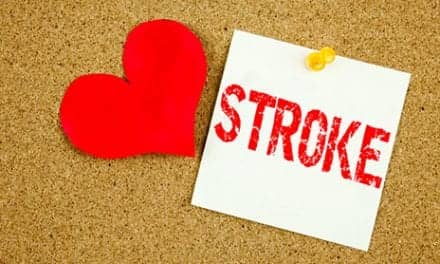
A participant in the UCSB study rides a stationary bicycle while wearing a wireless heart rate monitor and an EEG cap. (Image courtesy of University of California – Santa Barbara)
Researchers at UC Santa Barbara (UCSB) suggest that low-intensity exercise can boost activation in the brain’s visual cortex, where visual information is processed.
A study published in the Journal of Cognitive Neuroscience detailed the researchers’ work using 18 participants, each of whom wore a wireless heart rate monitor and an EEG (electroencephalogram) cap containing 64 scalp electrodes while riding a stationary bicycle.
While at rest and during bouts of both low-and high-intensity exercise on the bike, the participants performed a simple orientation discrimination task using high-contrast stimuli composed of alternating black and white bars presented at one of nine spatial orientations.
The scientists then fed the recorded brain data into a computational model that allowed them to estimate the responses of the neurons in the visual cortex activated by the visual stimuli. They analyzed the responses while participants were at rest and then during low- and high-intensity exercise, explains a media release from the University of California – Santa Barbara.
This approach allowed them to reconstruct what large populations of neurons in the visual cortex were doing in relation to each of the different stimulus orientations. The researchers were able to generate a “tuning curve,” which estimates how well the neurons are representing the different stimulus orientations, the release continues.
“We found that the peak response is enhanced during low-intensity exercise relative to rest and high-intensity exercise,” says lead author Tom Bullock, a postdoctoral researcher in UCSB’s Attention Lab, in the release. “We also found that the curve narrows in, which suggests a reduction in bandwidth. Together, the increased gain and reduced bandwidth suggest that these neurons are becoming more sensitive to the stimuli presented during the low-intensity exercise condition relative to the other conditions.”
Co-author Barry Giesbrecht, a professor in UCSB’s Department of Psychological and Brain Sciences notes in the release that they don’t know the mechanism by which this is occurring. “There are some hints that it may be driven by specific neurotransmitters that increase global cortical excitability, and that can account for the change in the gain and the increase in the peak response of these tuning profiles,” he states.
This work underscores the importance of exercise, the researchers add. “In fact, the benefits of brief bouts of exercise might provide a better and more tractable way to influence information processing—versus, say, brain training games or meditation—and in a way that’s not tied to a particular task,” Giesbrecht concludes in the release.
[Source(s): University of California – Santa Barbara, Science Daily]





